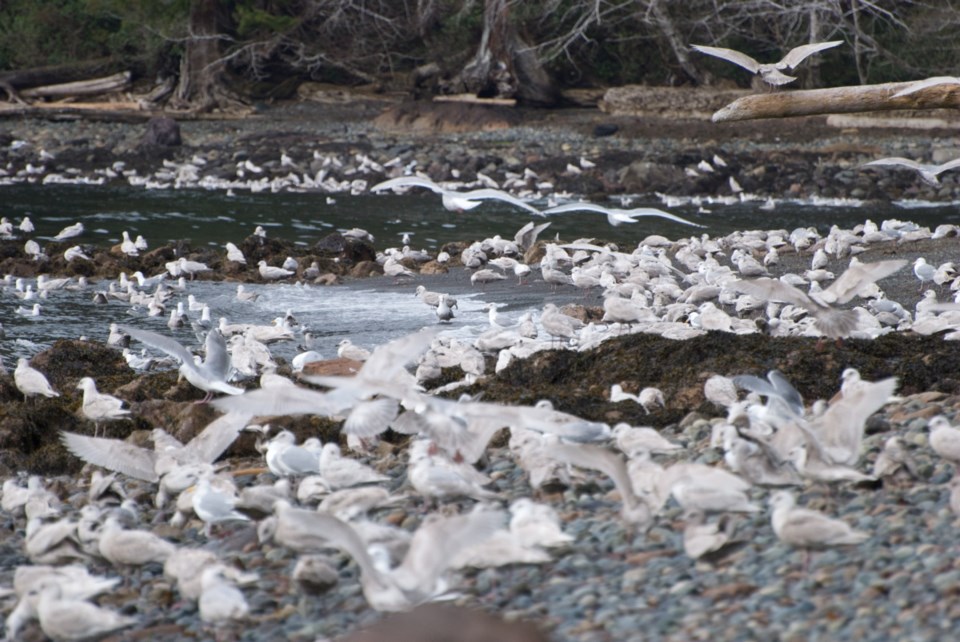The annual herring spawn off Vancouver Island, which provides a feast for sea lions, migratory birds and many other marine species, is attracting a whole different species: tourists.
After last year’s successful boat tours, the Parksville Qualicum Beach Tourism Association is again selling the March spawn as a tourist attraction.
This year, Deep Bay marine field station plans to run two three-hour boat excursions out of Union Bay on Sunday, March 2. The tours will take in not only the spawn, where the water turns milky blue, but also cruise by sea lions, Brant geese and other wildlife that converge for the feast.
“Those herring eggs, larvae and juvenile herring are like a marine Thanksgiving,” said Brian Kingzett, Deep Bay marine field station manager.
Last year’s excursions took in tens of thousands of migratory waterfowl, he said: “It was really, really quite something.”
The spawn gives visitors a chance to witness the resurgence of two once-endangered species: Pacific herring and Brant geese.
It isn’t essential to have a boat to take in the wonder of the herring spawn, said Kingzett, because there are birds, seals and hundreds of sea lions close to shore.
“It’s a very accessible wildlife spectacle,” he said.
Thousands of migratory birds pause in their journeys to feed between Parksville and Comox. The boat tours will offer a chance for biologists to talk about the amazing distances birds fly annually to get to their breeding grounds.
The spawn also showcases the booming numbers of marine mammals, Kingzett said.
“Seals are at an all-time population high, which means the transient killer whales are at an all-time high because they have lots of food. White-sided dolphins are coming for the food as well.”
It’s a lot of fuss over the Pacific herring, which is a fairly ordinary looking fish. Its eggs, or roe, are a valuable commodity and are usually destined for export to Japan. Herring live three to four years and come to coastal B.C. waters to spawn. They are low on the food chain and are a food source for many other marine species, Kingzett said.
“When they spawn, the females are laying down eggs and the males are discharging their sperm directly into the water,” he said.
“We were out in the boat last year and the spawn was happening right under the boat. The water went from dark blue to aquamarine all around us. They can spawn anywhere from the intertidal zone right down to the deep, say 10 or 20 metres.”
The location of the intense spawns varies from year to year, he said.
There will be a charge for the tour, but the price has not yet been set. For information and to book a place on a boat tour, go to brantfestival.bc.ca.



